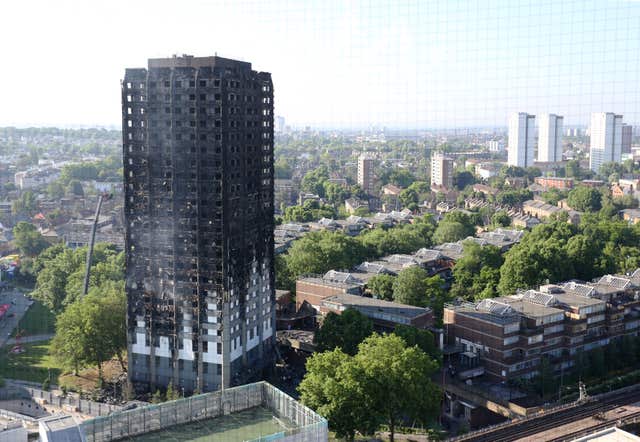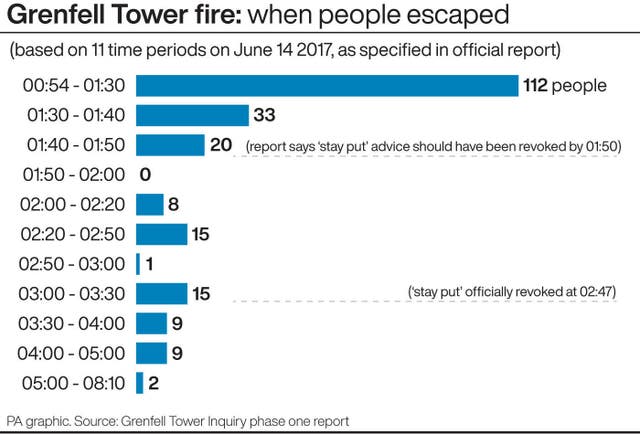
London Fire Brigade Commissioner Dany Cotton has distanced the service from the stay-put policy which was criticised in the Grenfell Tower fire public inquiry.
Ms Cotton was responding on Tuesday to questions at the London Assembly about the inquiry report into the fatal 2017 blaze which was released last week.
Asked about a review of the stay-put advice, which inquiry chairman Sir Martin Moore-Bick said should have been abandoned sooner, she told the committee it was not a fire brigade policy.
“The stay put is a building safety strategy policy, it’s not a London Fire Brigade policy or fire service policy,” she told the fire resilience and emergency planning committee.
“It is the policy that’s based on buildings behaving in the correct manner that allow firefighters to enter that building and put the fire out.
“The stay put is not a fire service policy to review, as such.”

The LFB commissioner came under fire last week when Sir Martin found more lives could have been saved if the policy had been abandoned sooner.
His report said there was an occasional reluctance of senior officers to believe that a building could ever fail to comply with regulations.
The evidence from the first phase of the inquiry “strongly suggests” that “stay-put” was an “article of faith within the LFB so powerful that to depart from it was to all intents and purposes unthinkable”, he said.
Bereaved relatives of those who died in the fire have called on Ms Cotton to resign.
The commissioner told the committee the service would respond differently to any tower block fire like the Grenfell tragedy in the future.
“Knowing what we know now about Grenfell Tower and similar buildings with ACM cladding, our response would be very different,” MS Cotton said.
“Knowing what we know now the actions that we would take would mean that we would respond in a different way.”

The commissioner said the scale and magnitude of the blaze that killed 72 people had never been seen before in the UK.
She added that the brigade acknowledged all the recommendations made in the report and identified areas where training of its officers was “inadequate”.
“We have identified areas where our training was inadequate and where the information we collected was inadequate,” she said.
“We do recognise there are areas where clearly there was insufficient training for both our firefighters, control staff and officers.”
Following the publication of the #Grenfell Tower Inquiry Phase 1 report, we have issued our statement below and in full here: https://t.co/BeaqENChyG pic.twitter.com/qIutBcFLgm
— London Fire Brigade (@LondonFire) October 30, 2019
She added that the brigade has provided additional training for its firefighters to know the signs of and how to deal with buildings that behave in an “abnormal way”.
Ms Cotton told the committee there were 40 fire engines at Grenfell and firefighters were there “in number in a very short space of time”.
“We physically could not have put any more firefighters into the building at one time,” she said, adding the single staircase in the tower limited the amount of personnel that could enter.
Ms Cotton said that although there is now a greater understanding of how fires in buildings with cladding spread, it would be difficult to implement training to respond to such situations.
“Because it is still such an extraordinary event of such a significant scale we still have huge concerns, about the fires in those types of buildings,” she said.


Comments: Our rules
We want our comments to be a lively and valuable part of our community - a place where readers can debate and engage with the most important local issues. The ability to comment on our stories is a privilege, not a right, however, and that privilege may be withdrawn if it is abused or misused.
Please report any comments that break our rules.
Read the rules here